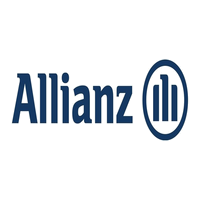All types of life insurance fall under two main primary fundamental categories:
Term Life Insurance
These policies last for a specific number of years and are suitable for most people. If you do not die within the time frame specified in your policy, it expires with no payout.
Permanent Life Insurance
These policies last your entire life and usually include a cash value component, which you can withdraw or borrow against while you are still alive.
Term Life Insurance
How it works: Term life insurance is typically sold in lengths of one, five, 10, 15, 20, 25 or 30 years. Coverage amounts vary depending on the policy but can go into the millions. "Level premium" term life insurance locks in the same price for the length of the policy. "Annual renewable" term life is a one-year policy that renews every year. Annual policies can be useful if you have short-term debts or need coverage for a brief period of time.
Pros: It's often the cheapest way to buy life insurance.
Cons: If you outlive your policy, your beneficiaries will not receive a payout.






Permanent Life Insurance
There are two types of permanent life insurance: universal life insurance & whole life insurance.
Universal Life Insurance
How it works: Indexed universal life insurance links the policy's cash value component to a stock market index like the S&P 500. Your gains are determined by a formula, which is outlined in the policy.
Pros: You can access cash value, which grows over time. And you may see considerable gains if the stock market performs well. Within limits, your payments and death benefit amount are flexible.
Cons: Due to investment caps, the cash value doesn't take full advantage of stock market gains. Plus, these policies are often more work than a term or whole life product, as the investments require monitoring.
Participation rate: The policy will dictate how much your cash value "participates" in any gains. For example, if your participation rate is 80% and the S&P 500 goes up 10%, you get an 8% return. If the index goes down, you won't lose cash value; you'll just get zero rate of return. Some policies offer a small guaranteed interest rate in case the market goes down.
Cap on gains: Your cash value gains are subject to a cap. So if the index goes up 20% and your cap is 10%, you'll get only a 10% return.
Death benefit and flexible premiums: Some policies let you adjust your death benefit as your family's needs change. Within limits, you can also decrease your premiums or skip a payment, as long as your cash value covers the costs. If you're skipping payments and you don't have enough cash value to cover the costs, your policy could lapse.
Whole Life Insurance
How it works: Whole life insurance typically lasts until your death, as long as you pay the premiums. It's the closest thing to "set it and forget it" life insurance. In general, your premiums stay the same, you get a guaranteed rate of return on the policy's cash value, and the death benefit amount doesn't change.
Pros: It covers you for your entire life and builds cash value.
Cons: It's typically more expensive than term life or other permanent policies.
Types of Life Insurance Underwriting
The term "underwriting" refers to how a life insurance company calculates the risks of insuring you. Therefore, the policy's underwriting determines how much you'll pay. There are three main types of life insurance underwriting:
Fully underwritten life insurance
If you're healthy, fully underwritten policies will generally be the cheapest option. This is because the application process typically includes a medical exam and questions about your health, as well as questions about your familyr's health history, your hobbies and your travel plans. Insurers use this data to price the policy more accurately based on your specific life expectancy.
Simplified Issue Life Insurance
Simplified issue policies don't require you to take a medical exam. However, you may be asked a few health questions and could be turned down based on your answers. Instant-approval life insurance policies use quick, online health questionnaires, as well as algorithms and big data to speed up the application process.
Guaranteed Issue Life Insurance
Guaranteed issue life insurance requires no medical exams and no health questions. In short, you can't be turned down for coverage if you're within the eligible age range, which is typically 40 to 85. However, this is an expensive way to buy life insurance, and coverage amounts are generally low.
In addition, these policies have graded death benefits, which means if you die within the first few years of having the policy, your beneficiaries may receive only a partial payout. People often buy this type of life insurance if they've been turned down elsewhere due to their health, but they want to cover final expenses, such as funeral costs.

Our Partners
Just a few of the partners we are able to offer products and services from:
















